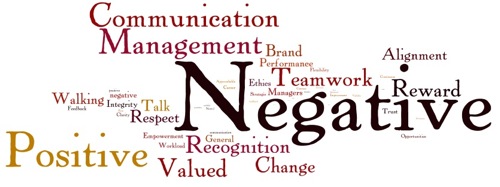Blog
Subscribe
Join over 5,000 people who receive the Anecdotally newsletter—and receive our free ebook Character Trumps Credentials.
Categories
- Anecdotes
- Business storytelling
- Collaboration
- Communication
- Corporate Storytelling
- Culture
- Decision-making
- Employee Engagement
- Events
- Fun
- Insight
- Leadership Posts
- News
- Podcast
- Selling
- Strategy
Archives
- March 2024
- December 2023
- November 2023
- October 2023
- September 2023
- August 2023
- July 2023
- June 2023
- May 2023
- April 2023
Years
Employee engagement – good intentions are not enough
My engineering friends would say it like this … good intentions are a necessary but insufficient condition for success.
In my working life I have only ever met a handful of people who deliberately set out to humiliate, disempower, demotivate or otherwise disengage staff. Yet these are exactly the effects that many managers/leaders have. How can this be?
The answer, of course, is the ‘knowing-doing gap’. It’s the difference between what we intend as a result of actions and the impact that we have on people. But, can managers really be so lacking in self-awareness?
Apparently the answer is yes! In this article (registration required) Lucy Kellaway from the London Financial Times describes an 18-month survey asking CEOs to list their 3 worst features. A staggering 97% list weaknesses that are really strengths, like ‘I’m too trusting and accessible’. Lucy’s conclusion is that the three worst traits of chief executives are a lack of self-knowledge, a lack of self-knowledge and a quite extraordinary willingness to give themselves the benefit of the doubt.
The Economist recently published this story:
“When Alan Mulally became boss of an ailing Ford Motor Company in 2006 one of the first things he did was demand that his executives own up to their failures. He asked managers to colour-code their progress reports—ranging from green for good to red for trouble. At one early meeting he expressed astonishment at being confronted by a sea of green, even though the company had lost several billion dollars in the previous year. Ford’s recovery began only when he got his managers to admit that things weren’t entirely green.”
So, step 1 needs to focus on getting leaders to acknowledge their faults and to focus on their impacts rather than their intentions. This is the first objective in our leadership programs. We expose participants to an equal number of positive and negative examples around engagement and the impact of manager behaviour. Participants are asked to identify what they think are the best examples and the ones that are worst. We also ask them to identify any examples where, as a manager, they have done this themselves or something like it. They identify these anecdotes by placing a blue dot on them.
The results are spectacularly conclusive. Over 75% of the blue dots are placed on the positive examples. Another way of saying this is that the participating managers consider themselves nearly four times more likely to generate positive experiences than negative ones. If this assessment were accurate it would probably be a pretty good place to work and employee engagement would be high. Unfortunately, in all four cases, employee engagement was moderate at best (between 40% and 60% of staff being ‘engaged’).
Our next step is to show these leaders a tag cloud (produced using Wordle) of the tags for all the examples collected in their organisation. A tag cloud of the aggregated data is shown below.

As the tag cloud shows, on average staff relate four times as many negative experiences as they do positive ones. This is almost the inverse of the managers’ self-assessment. For many leaders this comes as a revelation – they need to change their behaviour for staff engagement to improve. They need to look past their intentions and focus on the impact they are having in the workplace.
The data has been collected from over 250 leaders from four large organisations between 2008 and 2011.
 About Mark Schenk
About Mark Schenk
Mark works globally with senior leadership teams to improve their ability to communicate clearly and memorably. He has been a Director of Anecdote since 2004 and helped the company grow into one of the world’s leading business storytelling consultancies. Connect with Mark on:
Comments
Comments are closed.
“As the tag cloud shows, on average staff relate four times as many negative experiences as they do positive ones.”
I think this would be the average for society. Not just employees. Look at the news. I would think that there 4 times more negative news in the media then positive. financial planning newcastle